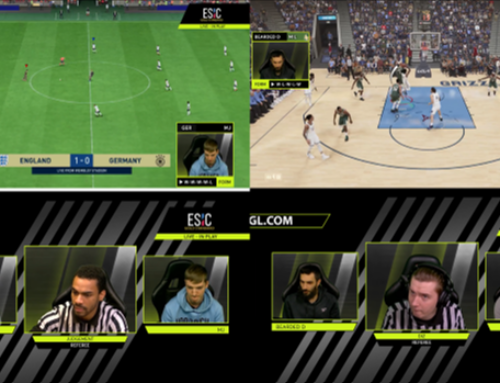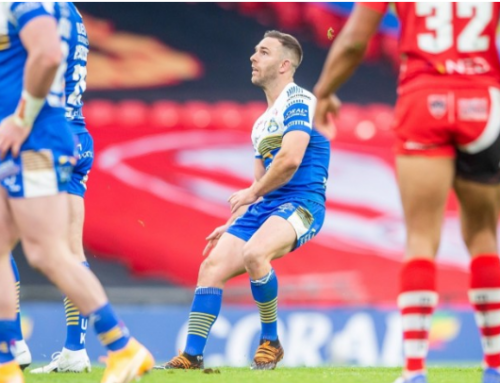As Chair of Rugby League, one of the three team collision sports – the others being Football and Rugby Union, I follow closely the issue of player safety and especially head injuries. We all work closely with each other on the issue of player safety particularly in the realm of concussion and sub-concussive injuries. We are all at various stages of legal action brought by former players for damages for injuries whilst playing in the past.
But our approaches vary slightly, inevitably, as we have different rules, different playing factors, different participation patterns and different regulatory regimes. And my colleagues at The FA and the RFU have found themselves in the news in the last couple of weeks. The focus on decisions taken that they were involved in highlights the profile that this issue has and the attention that has to be given to it.
Our sports face different challenges that have to be addressed. Football, of course, has heading of the ball. Rugby Union has contested scrums, rucks and mauls. Rugby League’s issue in the modern game is of tackle load and force and incidental head contact. Like other sports, we are spending considerable sums on research to enable us to better understand risk factors and how to mitigate them to make the game even safer.
But the two issues that have hit the news in the last two weeks represent points of difference between the sports.
Temporary Concussion Substitutes
At the IFAB (International Football Board) meeting in mid January, a proposal by the FA to introduce temporary concussion substitutes, was defeated and will not be revisited for another year. The proposal was for a a trial after a request from the world players’ union, Fifpro, and the World Leagues Forum to test a temporary concussion substitution protocol in the Premier League, Ligue 1 and Major League Soccer.
We have Temporary Concussion Substitutions in Rugby League. It allows a player with a suspected head injury to be taken off the field for an assessment and to be substituted while they are being assessed. If they are cleared to play again by the Medical Staff, then they can return to the field and resume their place. Of course, Rugby League has rolling substitutions anyway so this is easier to deliver but the principle is useful. The players head injury can be calmly assessed away from the filed of play with access to all relevant tests and the team is not disadvantaged, nor is the game unduly delayed while the assessment is taking place.
Football has concussion substitutes but once the substitution is made, the player can not return to the field of play. This means that the medical staff has to make a high pressure assessment on the pitch as to whether a concussion has occurred. As a result, the game stops for longer and the medical assessment is under pressure. We can all remember high profile examples even this season and in the World Cup where a player was cleared to continue after such an assessment only to have to be substituted some moments later.
Temporary Concussion Substitutions are very helpful in Rugby League and would be similarly helpful in football in my view.
But the lawmaking body of football- IFAB, rejected the proposal. IFAB is a curious body, an anomalous legacy of the history of the game. It is the only part of the world football rule making regime where the four British Associations retain a key role. IFAB is comprised of one representative from each of the FA’s of England, Scotland, Wales and Northern Ireland, and Four representatives from FIFA to create equality. Any decision to change the laws of the game requires a majority on IFAB. So FIFA has a veto and nothing can pass without FIFA and two other Associations supporting it.
Clearly therefore, on the issue of temporary concussion substitutions, FIFA used its veto and the proposal failed.
It will doubtless have to be revisited and we at Rugby League are happy to help with sharing of our experience. And this is an issue where The FA is going to continue to drive change. They deserve support in this process.
Tackle Technique
The RFU is also in the news after a backlash amongst some clubs and counties to a decision taken by the RFU Council to make changes to the permitted height of tackles. The RFU Council made the decision last week after review of a detailed report of evidence which supported the recommended change to tackle height. But, immediately after the decision was announced, criticism began to emerge. Some was from players and coaches, both retired and still playing. It is not for me to comment on that, but it is inevitable that any change in rules to improve player safety will attract criticism from players and coaches – the media will seek such comments out and there are always those willing to speak out. However, with this decision, such public criticisms were supported by concerns expressed by Community Clubs and Counties and some professional clubs about a lack of consultation and discussion. This is gaining some momentum and the media is reporting that some counties have called for a Special General Meeting to revisit the decision and have threatened to express no confidence in parts of the RFU.
All this shows what a finely balanced issue this is for the collision sports. As we all try to make the game as safe as we can, issues of governance, authority, participation levels and safety all collide and it is clear that great care needs to be taken in navigating changes through.
Research
Each sport is spending considerable resource on research, and is sharing the outcomes of that research with other sports where it is appropriate to do so. In Rugby League, which, of course, has access to lower levels of resource than the other sports, we have spent considerable resources on research using innovative mouthguard technology. This allows our researchers to measure in real time tackle loads and force throughout a game. It allows us to review such data as whiplash force, and pressure on the head and neck at different parts of the game. The project is across all levels of the game so that we can get an accurate and appropriately nuanced picture, that will inform decisions that might have to be made regarding the rules of the game. We need far more data than we currently have before we can make any long term decisions.
For now, we are continuing to use our disciplinary process together with player & coach education, to clamp down on dangerous tackles or those which create illegal head contact.
There is rightly a great deal of focus on how the game can be made safer, in the light of the injuries suffered by some of those who came before us. And there is much media and public interest in the subject. The attention and criticism that IFAB and the RFU have had in the the last two weeks will doubtless come round and this issue will remain one that the collision sports have to treat with the utmost seriousness.




